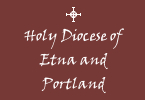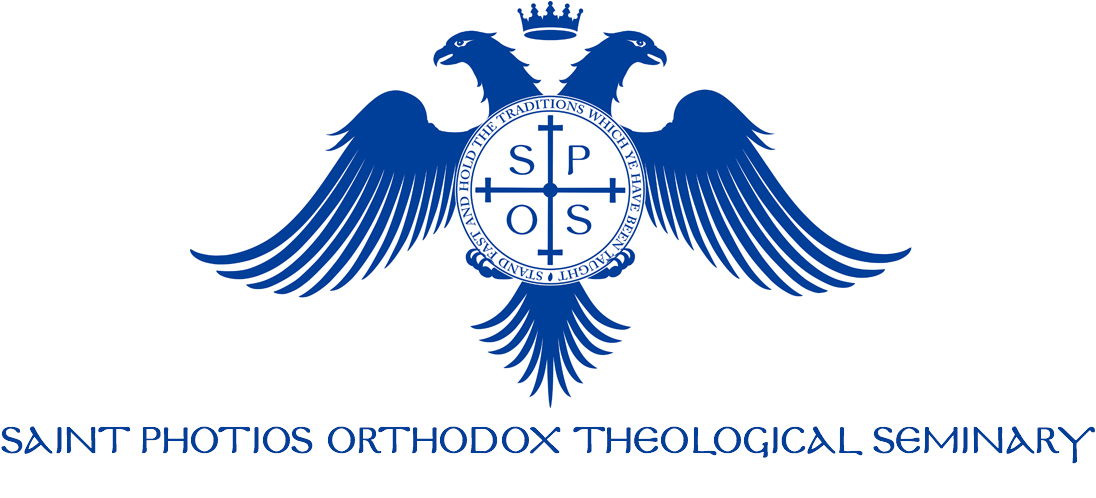2010 Youth Conference: One Priest’s Perspective
- Details
- By Fr. Anastasios Hudson
- Created on Monday, 01 November 2010 16:16
Each year since 2005, our Holy Metropolis has held a Youth Conference. The location rotates between our various parishes, and this year Detroit had its turn. This was the second year that Detroit hosted the event, the first time being 2006 when Sts. Nectarios and George hosted; this year St. Spyridon’s graciously hosted. We thank its rector Fr. Steven Allen, parish president Tony Katakis, and conference organizer Chrysostomos Tsorvas, along with all the volunteers who made the event run so smoothly.
I am presently the youngest priest in our Holy Metropolis, and as such have been invited several times to speak to the Youth. This year, I was asked by Fr. Steven to prepare a discussion of technology and social media, and how they can be properly used by Orthodox Christians. My talk fit into a bigger category of preparing a home of prayer, and avoiding distractions. Dr. Anna Marandici, a medical doctor, spoke about the physiological impacts of technology on the developing brain, and Daniel Schlein spoke about practical ways we can survive life as Orthodox Christians in a society that is increasingly hostile to our faith and even to us personally.
I arrived from Raleigh with my chanter John on Thursday night, and we were given hospitality by Fr. Steven and his presbytera. On Friday, Fr. Steven and I met His Eminence Metropolitan Pavlos and his traveling companions at the hotel in which they were staying. We took His Eminence to the parish of St. Spyridon so that he could be officially received and could venerate the relics and icons of the parish, which is a historic parish, being the first specifically-Old Calendarist Greek parish established permanently in the United States. After this, administrative concerns consumed Fr. Steven’s afternoon, while I prepared the finishing touches on my talk. Dinner commenced at five o’clock in the evening, and consisted of delicious fasting food. The different youth delegations from the parishes arrived through the evening, such that some were present at dinner, some arrived during the meal, and others arrived through the Vigil which followed or even late in to the night.
At 7:30 we began the Vigil service. In modern Greek parish practice, the Vigil is celebrated less frequently than in a Russian parish, such that when Vigils are celebrated, it is a special blessing. In 2009 in New York, we also held such a Vigil. Despite the varied arrival times of the various delegations, there was a sizeable attendance at Vigil. I was the celebrant of the service, and noticed many faces continuing to fill the Church as they had finished arrival and had settled in. In accordance with traditional Orthodox practice, all dressed modestly, men and women alike, which is refreshing in a world where people wear far less clothing as a matter of course than they should. We worship in the presence of the Almighty God, and must respect the place of worship, and our fellow Christians, whom we can easily distract by flashy or inappropriate clothing. I thank the chaperones for enforcing the proper dress, and the Youth for their cooperation and willingness to follow the traditions passed down to us by our spiritual Fathers and Mothers.
The joy of the children and young adults was pleasing to see. Our Metropolis is small, and far-flung, with parishes in Chicago, Detroit, New York, Florida, Oklahoma, and other locations that take so many hours to visit, yet amazingly, we are one family, united, and joined together in the deepest bond possible, that of being the adopted children of Our Lord Jesus Christ. Sharing a common faith, common Orthodox culture, and in many cases bonds of family and spiritual ties have kept us together over the years despite the distance. Additionally, each Youth Conference sees the forging of new friendships. Perhaps we will witness Christian marriages forming as well in the years to come! All of this reminds me that not only is our faith a deeply spiritual and other-worldly faith, but it reaches down to the very basics of human existence, and serves to enrich our daily lives as well.
On Saturday morning, we served the Divine Liturgy, and this was followed by breakfast. We then travelled to the local high school, where we had rented the facilities for the use of our conference. Fr. Steven introduced us with a keynote speech on building a habit of prayer, and we then broke in to groups. The three speakers each gave their talk to three groups: parents, young adults, and the youth, varying the intensity as appropriate for the age level. The smaller children had separate activities to complete with teachers.
Lunch came between the first and second rotations, and of course consisted of pizza. Being the Midwest, we were treated to deep-dish pizza, but even the New Yorkers—known for their love of thin-crust pizza—agreed it was fantastic. We were blessed to have our Metropolitan present at the lunch, speaking with some of the Youth. After lunch, sessions two and three commenced. The customary after-lunch sleep coma began to affect some of my audience, so I made sure to pepper my talk with plenty of “audience participation” to keep them engaged. Dinner came at 5:30, and consisted of Chicken Cordon Bleu. It was a hit. We then prepared for the Vespers, and served in preparation for our Sunday worship.
Sunday was a hierarchical liturgy served by His Eminence Metropolitan Pavlos with the participation of Archimandrite Niphon, Presbyter Stephen, Hiermonk Longinos, and myself. There were two choirs, representing the Detroit-Chicago “school” and the New York “school.” As someone who appreciates Byzantine music greatly, it was nice to hear what is obviously a unified system of music, yet which allows for some local expression, as witnessed by the selections employed and the style of execution. My ears were especially pleased to hear the Axion Estin (It is Truly Meet) hymn chanted in the First Plagal Mode in Patriarchal style, by the capable chanter Georgios from St. Isidoros parish in Bethpage, New York.
After liturgy was a lunch, and many of the participants had to leave due to not having the following day free from school or work. Those who remained were able to fellowship late in to the afternoon. It was in some ways a whirlwind of a weekend, but yet it was spiritually refreshing. Next year’s conference will be held in Florida, God-willing.
I was encouraged by my interaction with the Youth during the talks and socially. They seemed aware of the dangers of our modern society, and attached to their faith. Some had explicitly defended it to non-Orthodox, and others had had experiences that caused them to put their faith into practical use. All were respectful, and many were quite animated and engaged. I pray that they will always treasure their relationship with Christ and His Church, and continue to cultivate it their whole lives, raising up a new generation of committed Orthodox Christians to follow in their footsteps. May I live to see this day as well!
Orthodox Awareness
The Message of Patriarch Theodore of Alexandra Upon the Feast of Ramadan
The “Father of Fathers, the Thirteenth Apostle and the Judge of the World (as his pheme states), Pope and Patriarch of Alexandria, Theodore sent a message to the Muslims of Egypt upon the feast of Ramadan. It is as follows:
“The most sacred month of the Islamic calendar, the chief month of personal worship and great awareness of the Divine for every faithful Muslim ends today with the festive, joyous season of Eid al-Fitr. Read more...
Missions
Saints Peter and Paul Orthodox Mission, Tucson, Arizona
Saints Peter and Paul Orthodox Church is a beautiful mission parish near downtown Tucson, a city in southern Arizona. It was started in 1997 by Father John Bockman, who was a missionary Priest formerly serving missions in Tennessee and Massachusetts since 1990. Father John served the faithful in Tucson and the surrounding area in his home Chapel until his repose in November of 2000. His wife, Presbytera Valerie, continued to make her home Chapel available for the mission, with clergy from Saint Nectarios Orthodox Church in Seattle and His Eminence, Metropolitan Moses of Toronto (then of Portland), visiting to provide the Divine Services.
Read more...Youth
2025 Youth Conference
Please join us for the 2025 youth conference in Toronto, Ontario, Canada! To learn more, visit the conference website.
Ask A Priest
Is the GOC Insular?
Q. In considering becoming part of the GOC in America, I am getting warnings from various circles that the attitude of GOC people is that of being “walled off,” “arrogant,” “judgmental,” and “in your face” toward those not in the Genuine Orthodox Church, with accusations such as “World Orthodox” priests are “not even Christians” and the like. Could you give me your personal, realistic assessment of this dynamic and possibly refer me to an official statement on how GOC members should and do relate to and communicate with those in “World Orthodoxy”? Read more...





